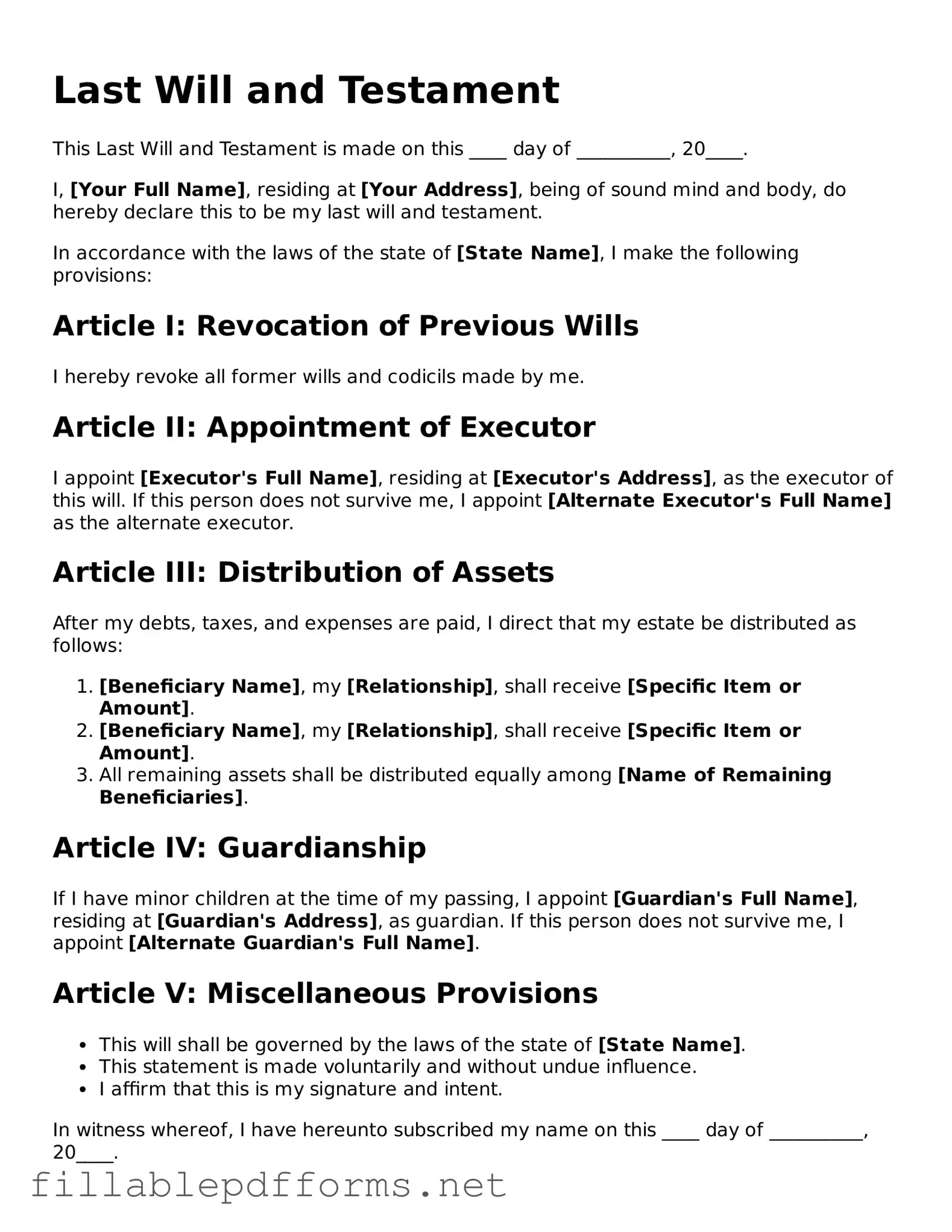Blank Last Will and Testament Template
A Last Will and Testament is a legal document that outlines an individual's wishes regarding the distribution of their assets and the care of any dependents after their death. This form serves as a crucial tool for ensuring that personal belongings are handled according to one's preferences. Understanding its components can help individuals make informed decisions about their estate planning.
Launch Editor Here
